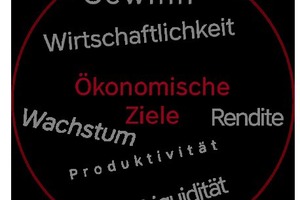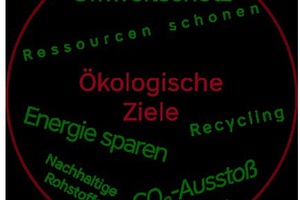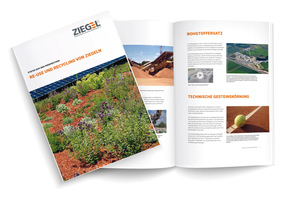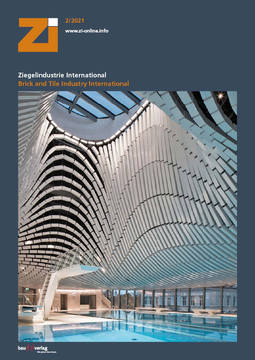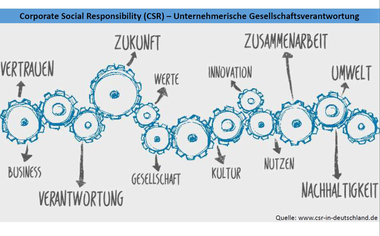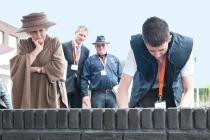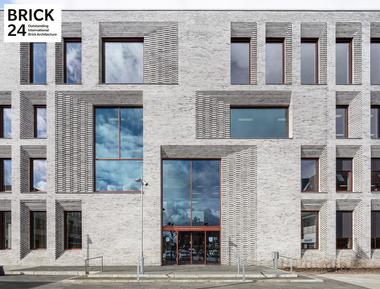From responsibility to opportunity – Corporate Social Responsibility in the clay brick and tile industry
Back on 19 April 2017, the CSR Directive Implementation Act (CSR-RUG) came into effect in Germany, with its publication, the EU directive on the disclosure of non-financial information was implemented in national law. Since then, publicly listed companies with more than 500 employees are obliged to publish a report as regulated by law. Even if very many of the plants in the clay brick and tile industry are small-to-medium family-run enterprises, CSR is an issue that will also be interesting and relevant for them in the near future.
Not only the national and international legislators, but the buyers of consumer goods, too, are now attaching increasing importance to so-called soft criteria, such as the sustainability of a product and social responsibility of the manufacturers, in their purchasing decisions. Especially when it comes to making bigger investments in their day-to-day life. So this topic becomes all the more relevant when it comes to designing their own four walls.
Change in perspective – from responsibility to opportunity
At first, CSR reporting may only seem to be an additional burden, on closer consideration, however, it can also be understood as an opportunity. Brick products, and their production, already meet very many criteria that are relevant for a positive presentation in the scope of a CSR report. Data that are regularly collected and evaluated can be included in the report with only limited effort and expense. The compilation of a CSR report opens up an opportunity to spotlight the particular sustainability of brick as a construction material of the future.
The raw material resources originate from regional deposits, production is continuously optimized with regard to technical and energy, the finished products boast a very long lifetime, and at the end of their useful life, they are 100 % recyclable.
It is possible to point out that in the brick and tile industry an immense responsibility is already accepted in product planning. Brick contributes to minimizing the impact on the environment during its use phase. For example, a high insulation standard leads to a low energy requirement of the building, the solid construction method offers optimum sound insulation, but fire protection at the same time. And not least, effluvia, so-called VOC (volatile organic compounds), are excluded from the outset thanks to the choice of brick as a construction material.
CSR reporting
Goal of the CSR directive is especially to increase the transparency of the ecological and social aspects of companies, besides the economic aspects, in the EU. It concerns information on environmental, social and employee interests as well as respecting human rights and the fight against corruption and bribery. All these aspects are taken into account in the report.
The weighting of these criteria is determined by the reporter. There are no standards that prescribe values or parameters to be met. DIN ISO 26000, which offers an internationally acknowledged frame of reference, provides merely a guideline for the drafting of a sustainability report. It is not certifiable.
The freedom in reporting allows the companies to focus on their individual strengths and then, in the second step, to formulate goals for the optimization and develop strategies for their realization.
Core topics that should be included in the report are:
Fair business practices, both internally as well as globally,
Employee-oriented human resources policy,
Economical use of natural resources,
Protection of climate and environment,
Responsibility in the supply chain, too,
Seriously meant local commitment.
The following seven steps help structure the sustainability report so that it can serve as the basis for the continuous improvement process.
Step 1: Defining vision and strategy
As in established management systems, the mission statement and corporate values are formulated in the company policy. It usually contains an obligation to ensure the availability of information as well as the resources necessary to achieve the strategic and operative goals. Precondition for this is the possibility for free communication and documentation and that over all levels of the company.
Step 2: Defining framework conditions for the report
Responsibilities and action plans must be defined, or, in other words, who does what, when and why? All three areas of the report, economic, environmental and social aspects, should be taken into equal account.
Step 3: Identifying key issues and stakeholders
In the discussion with relevant stakeholders, goal criteria are drawn up and the key company issues elaborated and communicated. The systematic analysis looks at the products, but also the services, and includes upstream and downstream value creation stages in the assessment.
Step 4: Data and information on the key issues
Once the first three steps have been completed, a comprehensive survey can be conducted. On the basis of the relevant assessment criteria, those performance indicators are recorded that can be used in a continuous assessment of the company. And here one must look at why there is no uniform standard. These assessment criteria differ so enormously from each other depending on the specific branch that they can only be defined individually.
Step 5: Deriving concrete goals and measures
On the basis of the information acquired and evaluation of the data and facts surveyed, concrete goals can be formulated, and measures derived. Here it is helpful first to find out in which areas of the company sustainability-relevant objectives already exist and how the company’s economic goals fit in with the environmental and social objectives.
Step 6: Compiling the report
The report should be geared to the desired target group. Concrete data and facts should be presented clearly, so that status quo is described concisely and incisively. Based on evaluation of the goal attainment level, the progress compared to the previous reporting period as well as an outlook on the goals for the future worked out.
In a first report, the achievements should also be described that are already self-evident in the company. With reference to the workforce, this can mean, for example: diversity, equality of men and women, but also different nations, inclusion of disabled people, advancement of employees with further professional training, but also flexibility of working hours, wherever this is possible.
Step 7: After the report is before the report
After publication of the report, for example in the press or at an employee-customer event, it is possible to enter into dialogue with the relevant stakeholders to let these share in the company’s further development.
Benefits justifying the effort
Reputation – The company’s reputation will impress especially those customers and business partners who appreciate sustainable business management and transparency or are already actively calling for it. A positive appeal reinforces customer loyalty and helps access new customer groups. Perception of the public image is directed to the company’s responsible activities, the company’s attractiveness as an employer is also increased. Against the background of the current shortage of skilled professionals, this aspect is not to be underestimated.
Efficiency – An already high-profile part of CSR reporting is energy and resource efficiency. Responsible management of all resources reduces the environmental impact of the business activities and, not insignificantly, the costs, too.
Risk minimization – Risk minimization is another relevant aspect. This becomes tangible with reference to the “resource” that is a company’s employees. Then the fewer days they lose, the higher the company’s efficiency. Efficiently functioning occupational health and safety management reduces the costs for accident-related production outage and days lost by employees.
Innovation – Research and development provide competitive advantages, in the case of the clay brick and tile industry not only compared with competitors from the same sector, but especially with regard to manufacturers of alternative construction materials. Product and process innovations promote the future sustainability of the companies.
Conclusion
Corporate Social Responsibility means accepting the social responsibility of the company over the entire supply chain and during the entire lifecycle of the product.
Sustainable business practices and activities create added value for the company, society and the environment. Thanks to responsible management of energy, water, materials, but employees, too, resources are preserved, and sometimes considerable costs saved.
Moreover, increasingly products and services with the rating “sustainable” are preferred by customers, so a specific business advantage is created for all involved.

